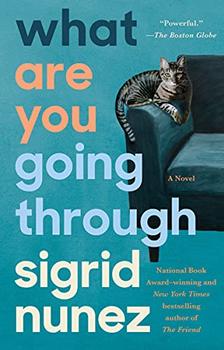Summary | Excerpt | Reading Guide | Reviews | Beyond the book | Read-Alikes | Genres & Themes | Author Bio

A young interfaith chaplain is joined on her hospital rounds one night by an unusual companion: a rough-and-tumble dog who may or may not be a ghost.
As she tends to the souls of her patients—young and old, living last moments or navigating fundamentally altered lives—their stories provide unexpected healing for her own heartbreak. Balancing wonder and mystery with pragmatism and humor, Ellen Cooney (A Mountaintop School for Dogs and Other Second Chances) returns to Coffee House Press with a generous, intelligent novel that grants the most challenging moments of the human experience a shimmer of light and magical possibility.
The repetition of meeting a character, learning their history, and saying goodbye to them as they pass on certainly captures how relentless and emotionally taxing the chaplain's work is, but it also means the novel can feel somewhat fragmented at times, reading more like a collection of interlinked short stories. At first, it can be frustrating to lose enigmatic characters just as we begin to feel invested in them; to so quickly have the focus shift on to someone else. But when you consider how closely this reflects the reality of the chaplain's situation, you realize what a clever structural device it is...continued
Full Review
(506 words)
This review is available to non-members for a limited time. For full access,
become a member today.
(Reviewed by Callum McLaughlin).
 Throughout Ellen Cooney's One Night Two Souls Went Walking, there are several key scenes in which our narrator – a hospital chaplain – observes therapy dogs at work. The book comments on the grace and importance of the service these animals provide for patients, from aiding recovery to providing comfort in someone's final moments.
Throughout Ellen Cooney's One Night Two Souls Went Walking, there are several key scenes in which our narrator – a hospital chaplain – observes therapy dogs at work. The book comments on the grace and importance of the service these animals provide for patients, from aiding recovery to providing comfort in someone's final moments.
Like emotional support animals, therapy animals (most commonly dogs and cats) can have a hugely positive effect on a person's mental health, offering patients a sense of companionship during a time of fear and uncertainty. But while emotional support animals tend to be privately owned pets that work consistently with one individual, therapy animals work with trained handlers, allowing them to assist...
This "beyond the book" feature is available to non-members for a limited time. Join today for full access.

If you liked One Night Two Souls Went Walking, try these:

by Sigrid Nunez
Published 2021
The New York Times-bestselling, National Book Award-winning author of The Friend brings her singular voice to a story about the meaning of life and death, and the value of companionship.

by Marina Kemp
Published 2020
In this haunting novel, a young nurse forms an unlikely connection with the elderly man she cares for, and finds herself confronting the guilt she carries from her past.
These are not books, lumps of lifeless paper, but minds alive on the shelves
Click Here to find out who said this, as well as discovering other famous literary quotes!